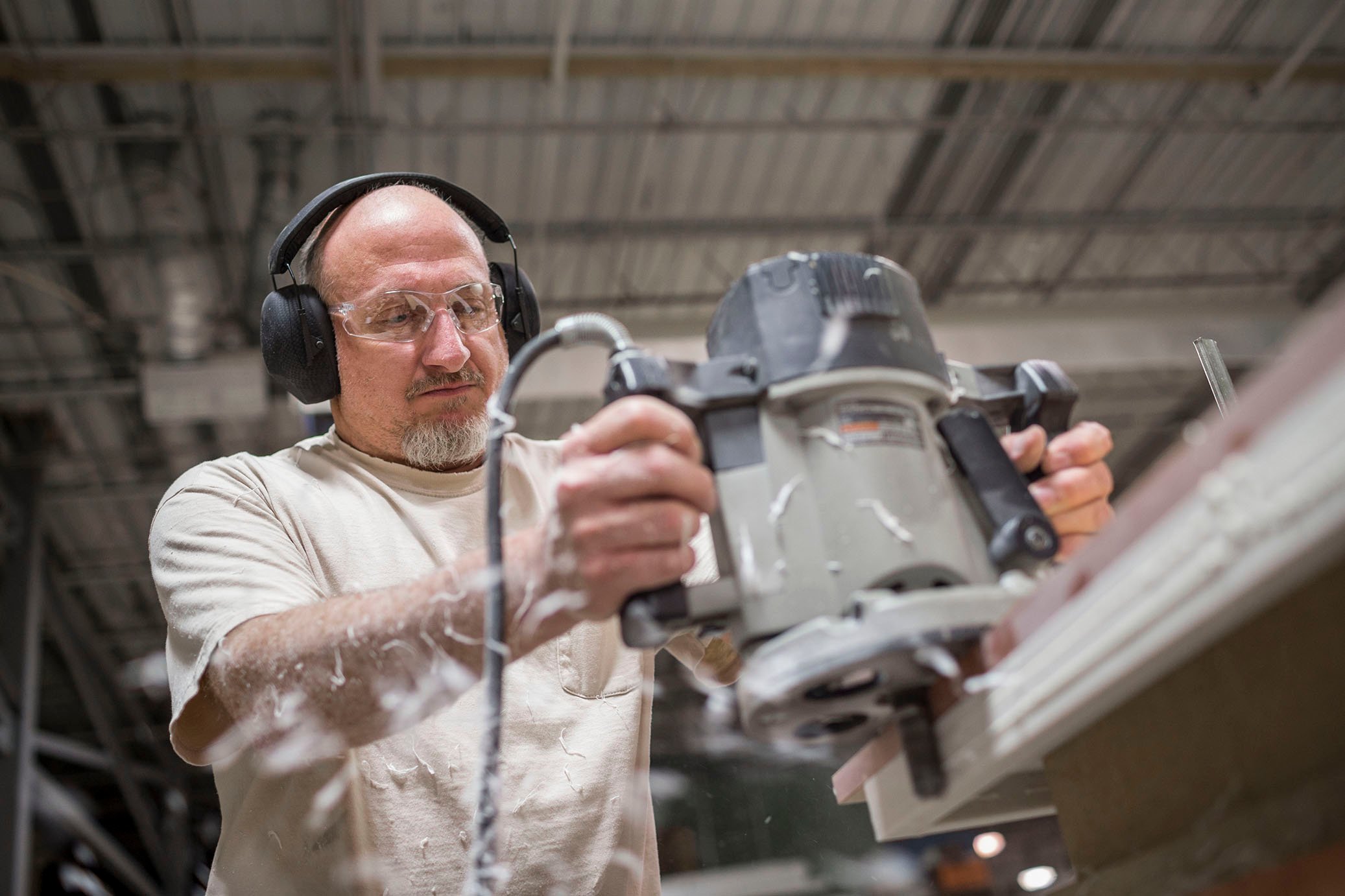
Noise Control Strategies: How to Prevent Occupational Hearing Loss
In a previous blog, we shared that 22 million workers are exposed to hazardous noise levels each year which can lead to occupational hearing loss (OHL). Hearing loss is the third most common chronic physical condition and 24% of hearing difficulty can be attributed to occupational exposure. With 1 in 4 incidents of hearing impairment coming from the workplace, it is imperative that companies create noise control strategies to protect their workers.
Causes of Occupational Hearing Loss

Occupational hearing loss is caused by prolonged exposure to sounds over 85 dB (sometimes even as low as 70 dB)or sudden exposure to sounds over 120 dB in the workplace. Gas-powered yard equipment, motorcycles, and max volume Air Pods can all exceed the decibel limit for overexposure, meaning that noise control strategies need to be implemented on job sites.
Many job sites can reach and exceed the 85 dB limit, including jobs working near roadways that are exposed to traffic sounds and those that use heavy machinery or equipment. According to ANSI, the average noise level of a construction site is 80-90 dB, with specific sites and tools varying. A hammer drill is measured at approximately 120 dB. Bulldozers and nail guns come in at around 100dB while cranes, forklifts, and concrete mixers measure at roughly 90 dB. The average exposure levels and loudest tasks of six common construction trades are:
- Iron work: 91.1 dB, 99.6 dB laying metal deck
- Carpentry: 89.3 dB, 95.1 dB using roto hammer
- General labor: 89.1 dB, 102.9 chipping concrete
- Masonry work: 88.5 dB, 97.0 dB grinding
- Operation engineering: 88.4 dB, 91.2 dB welding
- Electrical work: 86.7 dB, 95.8 dB installing trench conduit
Hearing Loss Explained

Prolonged exposure to loud noise or even sudden exposure to extremely loud noise can cause occupational hearing loss. Hearing a 127 dB sound for even one second can cause hearing damage. Understanding the science behind hearing impairment can help explain why this is.
According to the CDC, “Noise can damage hair cells, membranes, nerves, or other parts of your ear. This can cause temporary or permanent hearing loss.” Damage from noise is especially common in the inner ear, or cochlea. The cochlea is filled with thousands of hairs, cilia, that allow your brain to detect noise. When 30-50% or more of the cilia are damaged or destroyed hearing loss can be measured. The cilia are not able to be repaired once destroyed. But they can heal from temporary damage which is why some hearing loss is only temporary.
The effect of occupational hearing loss may appear weeks, months, or even years after the exposure occurs as it can compound over time. For this reason, proper noise control strategies can benefit workers even after they retire.
Noise Control Strategies
There are many noise control strategies that can be implemented to help reduce the risk of sudden and gradual occupational hearing loss for workers. These five listed below can help ensure that your workers are protected from OHL and keep companies compliant with OSHA and other standards. See their websites for full details on rules and regulations.

Monitoring the noise level.
They say the first step to fixing a problem is admitting you have one. That is why one of the most important noise control strategies is to monitor the noise level. A company should invest in sound level meters that can give you the overall noise level of a task and dosimeters which can tell you the exposure of an individual worker. There are also apps on smartphones that can give you a general idea of the sound level at a given time.
Adding sound barriers or relocating equipment.
Heavy equipment or machinery is one of the main culprits for noise overexposure. In order to combat this, this equipment should be located as far as possible from the main worksite/workers. Doubling the distance between workers and machinery can reduce their noise exposure by 6 dB. If in an enclosed space, sound barriers should be used when possible and equipment should not be located around surfaces that will reflect or amplify the noise. Something as simple as plywood barriers can reduce the noise by 10-12 dB. Equipment designed to work quieter should also be purchased when available.
Wearing proper hearing protection.
If the overall noise level of a work environment cannot reliably be brought down to a safe level, hearing protection should be worn. Hearing protection like earmuffs and earplugs are common PPE used by workers to reduce their risk of occupational hearing loss. Pyramex earmuffs have a noise reduction rating (NRR) of 19 to 28. Earplugs offer an NRR of 22 to 34. Wearing hearing protection together or separately can help reduce the amount of noise a worker is exposed to, making it one of the easiest noise control strategies. In practice, wearing earplugs with an NRR of 30 in an area that reads 100 dB will bring the noise level down to the safe level of 70 dB.
Allowing breaks from noisy areas.
Certain work environments are simply loud. No matter what noise control strategies are used, workers will be exposed to high noise levels. In these cases, workers should take frequent breaks in quiet areas to limit their prolonged exposure. This will allow their cilia to heal and offer reprieve from the offending sounds waves. No matter how many breaks are given, workers should not be exposed to noise levels that go against OSHA rules or that of other regulatory bodies.
Knowing the signs of hearing damage.
While hearing loss can be immediate, it can also grow over time, compounding the damage. Knowing what signs to look for in workers can prevent that from happening. Common signs of hearing loss are:
- Muffled speech and other sounds
- Trouble hearing high pitched noises
- Trouble understanding conversations in noisy settings
- Trouble understanding speech over the phone
- Trouble differentiating consonant sounds (ex. s for f/p for t)
- Asking others to speak more slowly, loudly, clearly, or to repeat what they said
- Listening to the TV, radio, or other sounds loudly
- Tinnitus (ringing in the ears)
- Hypersensitivity to certain sounds (annoyance or pain)
Early detection is crucial to preventing further hearing loss. Anyone experiencing these symptoms should see an audiologist or healthcare provider for a hearing test as soon as possible.
Most cases of occupational hearing loss are preventable with proper noise control strategies. At Pyramex, we know the importance of protecting workers against hazardous noise and have created a line of products to do just that. Browse our hearing protection products and learn more about choosing the right PPE for yourself or your workers.



